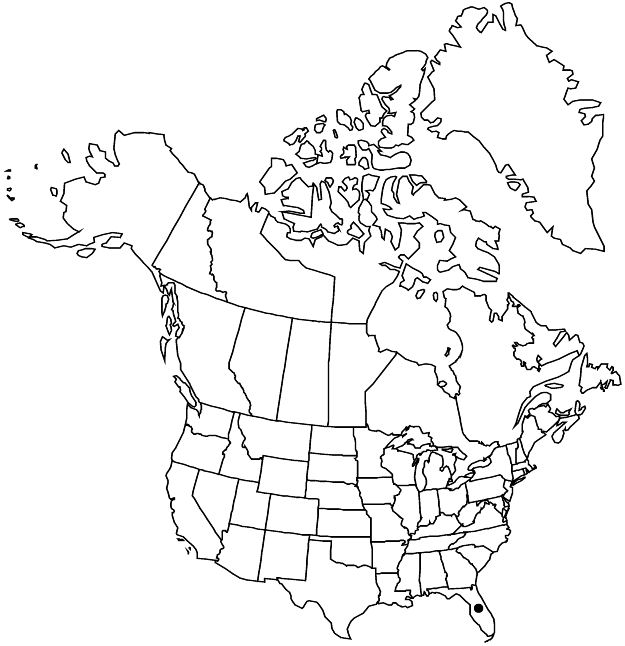Difference between revisions of "Guaiacum sanctum"
Sp. Pl. 1: 382. 1753.
FNA>Volume Importer |
imported>Volume Importer |
||
| (4 intermediate revisions by 2 users not shown) | |||
| Line 44: | Line 44: | ||
-->{{#Taxon: | -->{{#Taxon: | ||
name=Guaiacum sanctum | name=Guaiacum sanctum | ||
| − | |||
|authority=Linnaeus | |authority=Linnaeus | ||
|rank=species | |rank=species | ||
| Line 59: | Line 58: | ||
|publication year=1753 | |publication year=1753 | ||
|special status=Conservation concern | |special status=Conservation concern | ||
| − | |source xml=https:// | + | |source xml=https://bitbucket.org/aafc-mbb/fna-data-curation/src/2e0870ddd59836b60bcf96646a41e87ea5a5943a/coarse_grained_fna_xml/V12/V12_946.xml |
|genus=Guaiacum | |genus=Guaiacum | ||
|species=Guaiacum sanctum | |species=Guaiacum sanctum | ||
Latest revision as of 19:18, 5 November 2020
Trees, 2.5–10 m; trunk sometimes to 1 m diam.; bark scaly; branches many, spreading, smooth; crown dense, rounded. Leaves opposite, (4–)6–10 cm, not folded at night; stipules usually deciduous, ovate, 3 mm, apex acuminate, usually mucronulate, hairy; petiole shorter than leaflets; leaflets (4–)6–8(–10), green, elliptic to obliquely oblong or obovate, 20–35 × 8–15 mm, apex rounded, subcoriaceous. Pedicels glabrous. Flowers appearing terminal, solitary to several in axils of upper leaves, 2–3 cm diam.; sepals 4–5, obovate, 5–7 mm, outer smaller; petals 4–5, blue, obovate, 7–11 × 5–7 mm, base clawed, apex rounded to lobed; stamens 8–10, ± as long as petals; filaments subulate to base slightly winged; ovary 4–5-lobed, 4–5-locular, obovoid, glabrous; style subulate. Capsules becoming greenish yellow to bright orange, obovoid, 14–20 × 12–14 mm, 4–5-lobed, 4–5-winged, apex pointed, smooth, glabrous. Seeds brown or black, ellipsoid, 10–11 mm.
Phenology: Flowering Mar–Jul.
Habitat: Tropical hardwood hammocks on islands.
Elevation: 0–10 m.
Distribution

Fla., se Mexico, West Indies, Central America.
Discussion
Since the early sixteenth century, an extract of the heartwood of Guaiacum sanctum has been considered a remedy for venereal disease; today the resin is used medicinally to check for occult blood in human stools. The wood is exceptionally strong and resinous, and hence has been used to make bearings and bushing blocks to line stern tubes of propeller shafts in steamships. Today the wood is used mainly to make such turned objects as mallets, pulley sheaves, caster wheels, bowling balls, stencil and chisel blocks, mortars and pestles, brush backs, and planes (D. M. Porter 1972). Overexploitation of G. sanctum has caused it to become extirpated or rare in many of the localities where it once occurred in abundance. The species is a state endangered species in Florida, where it is restricted to Miami-Dade and Monroe (Keys only) counties.
Tree ring analyses of Guaiacum sanctum individuals in the largest remaining U.S. population, in Lignumvitae Key Botanical State Park, indicate that some may be more than 1,000 years old (E. O. Wilson and T. Eisner 1968). This population is under threat from a parasitic scale insect (Toumeyella lignumvitae), which is endemic to the Keys and known to feed only on G. sanctum. It is a direct threat to the viability and continued existence of this last intact United States population (J. R. Dertien and M. R. Duvall 2009).